The World’s Greatest Highway System … that’s what the Pennsylvania Turnpike was billed as when the first section of it opened on October 1, 1940! That first section stretched 167 miles from Irwin to just east of Pittsburgh and Carlisle, which lies west of the Pennsylvania capitol of Harrisburg.
The visuals here all come from a postcard-like folio which I came across when I was helping a friend empty her house in preparation for its sale. She pointed to a box, asking me what was in it … I opened and quickly realized it was filled with travel brochures, photos and the like which had been collected by her parents dating back many decades. Amongst the contents was this item from early 1951 about the PA Turnpike … the only way I was able to date it was that what was called the Philadelphia Extension—which extended only to Valley Forge—was opened in November 1950; whereas, the completion to the Ohio border opened in December, 1951.
Let me note that both the western and eastern extensions, taking the Turnpike from the Ohio border to Valley Forge were authorized by acts of the Pennsylvania Legislature about the same time as the first section opened; however, nearly a decade would pass before being constructed due to the outbreak of World War II in late 1941.
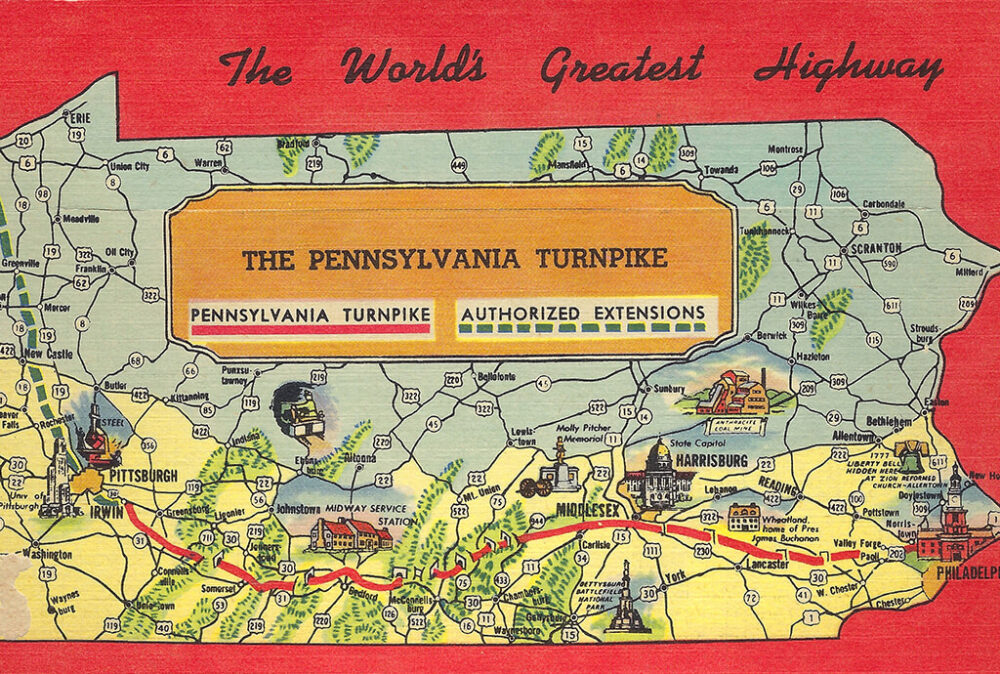
I have no recollection of where I found the following document, but believe it’s a press release published by the Turnpike Commission in the same time period, early 1951 … as it notes when the two parts of the western extension are expected to open, yet makes no direct reference to the Philadelphia Extension.
The Pennsylvania Turnpike System was constructed originally to breach the barriers formed by the Appalachian Mountain range and to facilitate free, rapid movement of transportation between great centers of industry and populations.
The Turnpike embodies the most modern principles of express highway design and reduces the limitations of space and time now imposed on the motoring public by other routes.
These primary objectives have been attained by piercing the highest ridges of the Appalachians with seven tunnels all brilliantly illuminated; the spanning of 274 streams and rivers; engineering which specified easy grades none greater than three per cent separated from 378 highway and railroad crossings; establishment of interchanges where turnpike crosses important highways; by passing all cities and towns and the provision of direct alignment with easy curvature.
The 327-mile Turnpike System is the first long distance highway in the world to be constructed with all modern requirements of transportation incorporated in the design. Alignment and curvature were designed to facilitate the movement of vehicles at a uniform speed. It is possible for the motorist to maintain consistent speed and continue without interruption or delay throughout the entire length of the Turnpike with an ease and comfort never before attainable on American highways.
SERVING THE TURNPIKE MOTORIST
Throughout the entire length of the Turnpike, service stations and restaurants are located on both east and westbound lanes of the system at convenient intervals. The twenty-one stations provided by the Esso Standard Oil Company and the Gulf Oil Company are deluxe restaurants and automotive service stations. All are built along early Pennsylvania architectural lines, constructed of stone quarried in the neighborhood.
Twenty of these stations are one-story buildings, complete with lubricating pits and automotive appliance sales space; located in areas sufficiently large to provide adequate parking space for pleasure cars and trucks. There are separate areas for each type. Midway station near the Bedford Interchange features an elaborate two-story limestone, Colonial-type building, with four dining rooms; a truckers dormitory with smoking lounge and a recreation room for their comfort and relaxation.
Each service station provides restaurants and dairy bar service and many of them have table service where hungry motorists can have a variety of delicious meals. All of the dairy and lunch counters as well as the restaurants and dining’ room service are under the direct supervision and management of the celebrated caterer — Howard Johnson.
NOTE: The portion of the Turnpike System between the Irwin Interchange and the Pittsburgh Interchange is planned for opening sometime in November or December 1950. The balance of the System between the Pittsburgh Interchange and Gateway Interchange on the Ohio border totaling 56.4 miles is planned for opening near the end of 1951.
I was barely in my teens when my awareness of the Pennsylvania Turnpike occurred when it became the primary topic of conversation in our small village in Bucks County, Pennsylvania, this is because the eastern extension of the Turnpike would take it to the Delaware River and New Jersey and was going to split our community in half!
An uproar ensued and a justification for a change in the routing was the two cemeteries whose properties backed up to each other, and a general rule was that eminent domain property seizures could not be carried out if burial plots would be disturbed; however, it was quickly learned that the back areas of each cemetery held no graves, simply used for maintenance and storage—leaving room for the turnpike to go through!
Today, unless you live in the community of Feasterville, driving through you’d not even realize the turnpike comes through, as it’s in a fairly deep cut and the bridges over it are level with the local streets.
The final leg of the East-West route of the Pennsylvania Turnpike takes it to the Delaware River, opening in November 1954. Meanwhile, the construction of the New Jersey Turnpike had begun and plans were made to connect the two roadways … 18 months later, the bridge over the Delaware River was completed and the two highways were tied together. This meant that a plan conceived more than 20 years earlier, allowing a motorist to drive across the state of Pennsylvania without stopping for a traffic light or stop sign, finally permitted one to drive from northern New Jersey to Pittsburgh and beyond without a required stop!
I must share with you, while a lot of what I’ve shared comes from memory, I would not have most of the actual dates and confirmation of details, if it weren’t for the following book co-authored by my friend, Mitch Dakelman. So, if you are into history and/or would like to know more of the story of the Turnpike, including what played a role in the routing of the original section of the Pike … I urge you to make this worthwhile purchase.
P. S. – Regarding the route of that first section … a partially-built but never completed railroad right-of-way played a role!
As always, would love to have your comments or even a story about an experience on the Pennsylvania Turnpike.
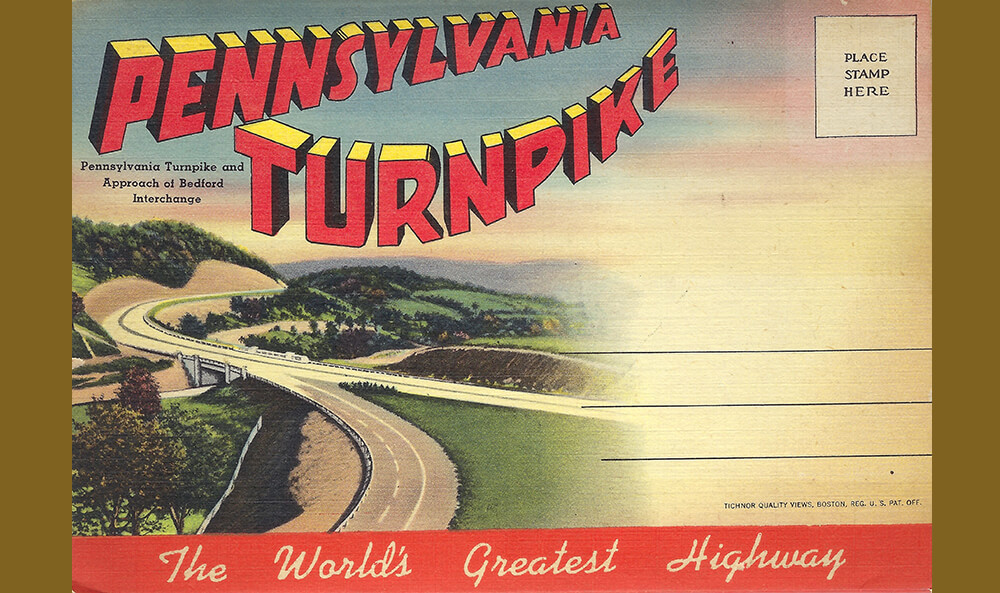
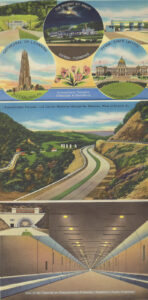
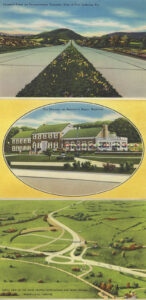
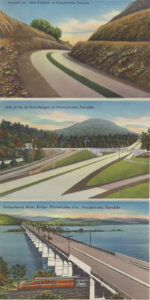
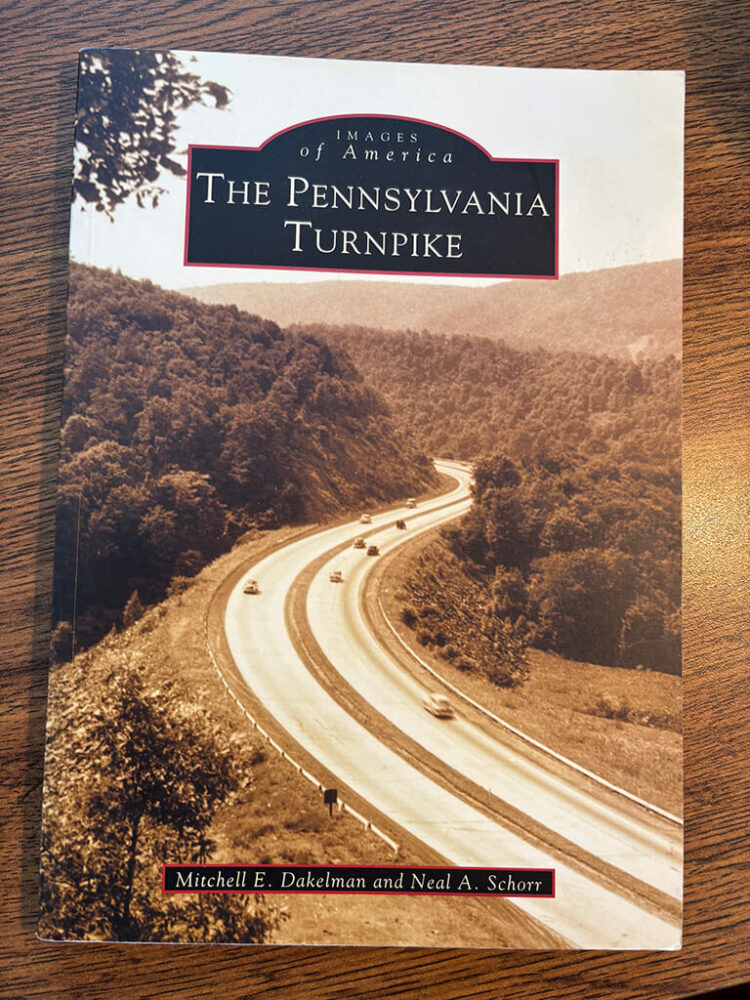


Important ground transportation history! Thanks for this relook at the toll road that set a standard for other state toll roads that followed.
Thanks, Mike … your comments always appreciated!
Hi Marlin, thanks for the plug on our Turnpike book. A second book, The Glory Years of the Pennsylvania Turnpike was published several years later. Dan Cupper, a well-known member of the NRHS, wrote a Turnpike history book for the Pennsylvania Turnpike Commission in 1990. He used some materials from my collection. Both Dan and the Turnpike people advised me that he is updating the book as I write this note. Also, the PTC published some nice coffee table type books. I think they call it “Wheels in Motion”. There is not much history in this hardback volume, but a lot of nice photos. I worked on the project and supplied them with several archival color images. Now that I have enough color images, I may publish a new book, to be privately published.
When I was a kid in Akron, Ohio, my parents would drive the PA Turnpike to see friends in Media, PA and I vividly remember the seven tunnels on the way…I believe most have been either routed around or replaced/modernized to be much brighter and better ventilated. Dad would tell us that the original route was, indeed, intended to be a railway bed but that didn’t materialize of course. And one of the stops we would make was at its midpoint back then, and it boasted a tunnel beneath the road bed to get to the other side. Ahhh..memories! Rick
Thank you, Rick … always appreciate reading these real-life experience stories!